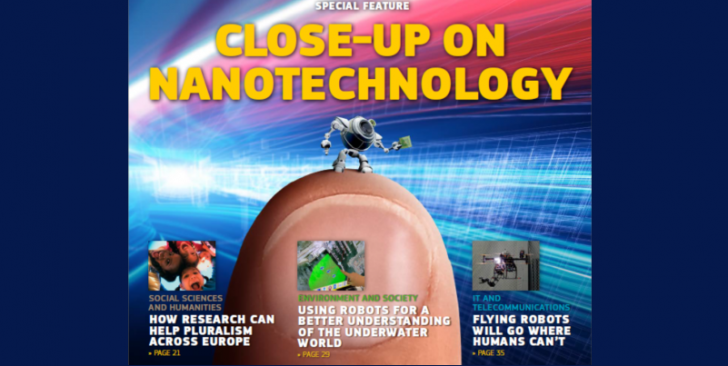Close-Up on Nanotechnology: the latest EU research achievements

The editorial team of the „research*eu results magzine“ dedicates a special issue to nanotechnology and the latest research achievements in a “framework programme” of the European Union focused on nanoscience, nanotechnology, materials and new production technologies
When it first earned public recognition in the early 2000s, nanotechnology was mostly a niche market. It started out with a few applications such as cosmetics, food products, textiles and automotive bumpers, but quickly expanded to other sectors. Recently, the growing market reached the frantic pace of 3 or 4 new products being released each week.
Decision-makers worldwide were quick to acknowledge this tremendous potential — although not without apprehension. In 2004, right after the US Congress came up with its ‘21st Century Nanotechnology Research and Development Act’, the European Commission adopted its communication ‘Towards a European Strategy for Nanotechnology’ which aimed to institutionalise R&D efforts with a coherent strategy. The document notably underlined nanotechnology’s capacity to address the challenges faced by society through novel applications for the likes of health and biology, ICT, energy production and storage, manufacturing and environment protection.
This was 10 years ago. Since then, the EU has invested some EUR 3.5 billion in nanotechnology-related projects, both to develop new products in strategic fields and to ensure all potential uses are subjected to thorough safety controls and measures. As we are now at the dawn of Horizon 2020, the editorial team decided to focus an issue of the research*eu magazine on some of the latest EU research achievements under the FP7-NMP programme. This makes for a truly horizontal ‘special’ section, with themes including art conservation, electronics, water purification, clothing, building and construction and nanosafety.
Source: Editorial research*eu magazine N°37 November 2014
Image Source: Cover research*eu magazine N°37 November 2014